First I listened to the Pass Labs XP-12 line-level preamplifier paired with the First Watt SIT-3 stereo amplifier (review HERE), utilizing the very musical Audio Note (UK) CD 2.1x/II Level Two Red Book CD player as a source HERE), and then I did some more listening with my CTC Garrard 301 turntable as a source (HERE).
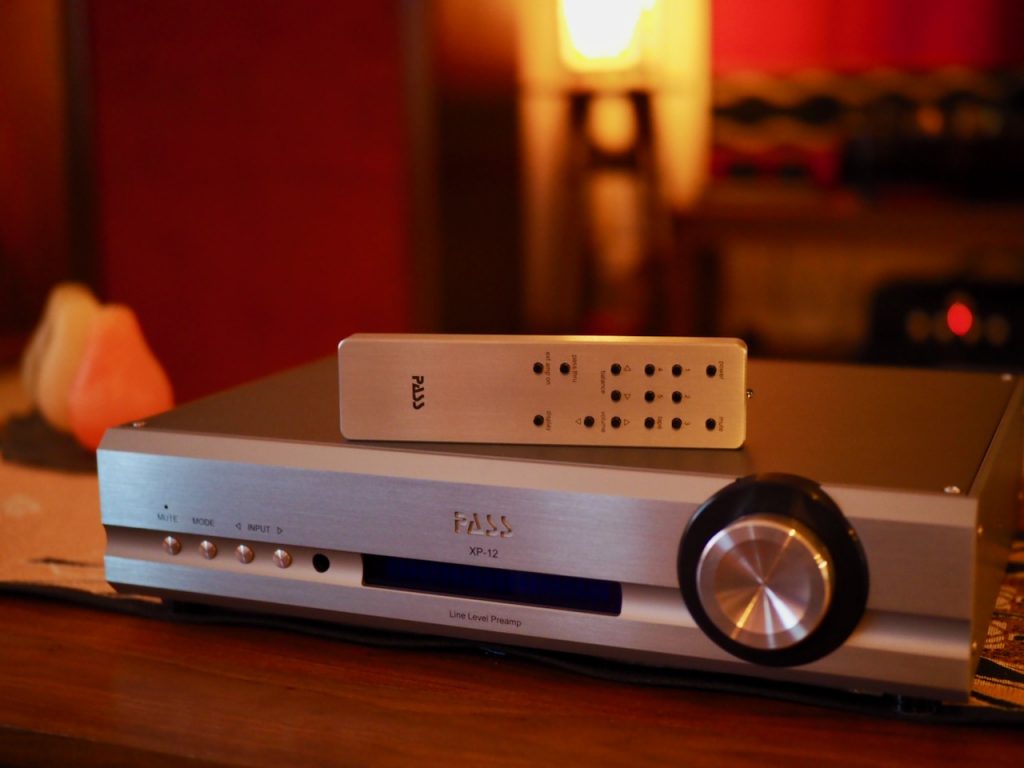
Pass Labs XP-12 preamplifier and remote control.
I'll tell you what, the XP-12 pre and First Watt SIT-3 amp combo is really something special on the the big "Stokowski" Altec loudspeakers with their Duelund CAST tinned-copper crossovers.
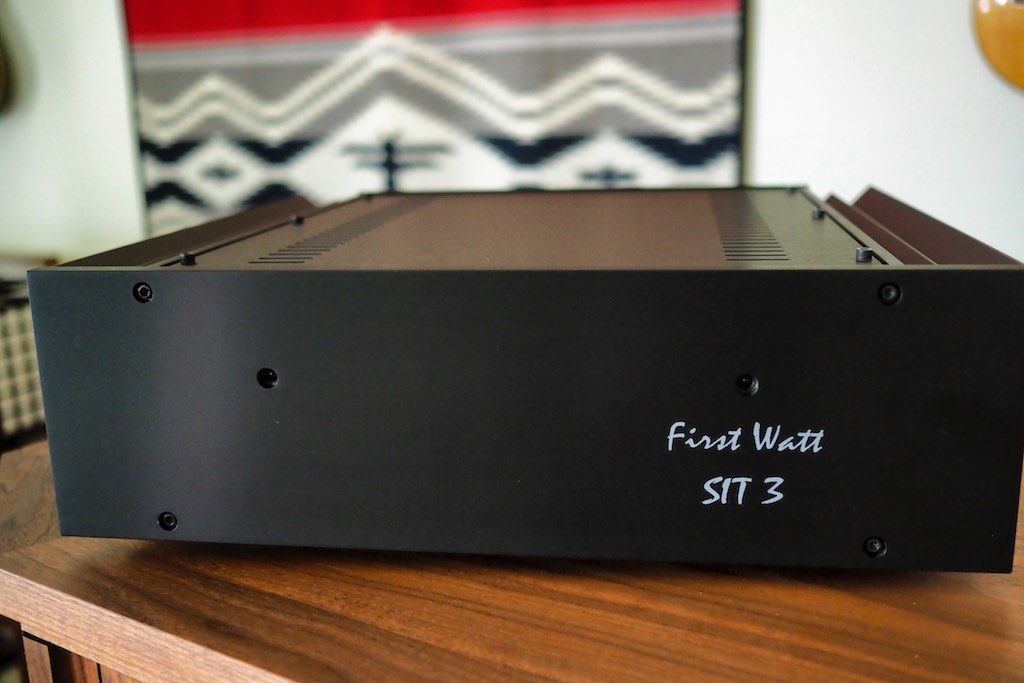
First Watt SIT-3 stereo amplifier.
The overall performance of the combo was just breathtaking, and whether I was listening to CDs or vinyl, I heard superbly natural overall tonality, excellent dynamics, and a vivid presence of instruments and vocals on the soundstage.
Musical elements like dynamics, beat, harmony, tempo, melody, timbre, tone color, and rhythm were superbly portrayed, and the impressive portrayal of audiophile-style visuospatial elements like soundstage, imaging, sense of recorded acoustic, all combined beautifully to provide a liquid, rich, natural, dimensional, and an emotionally charged presentation of the music.
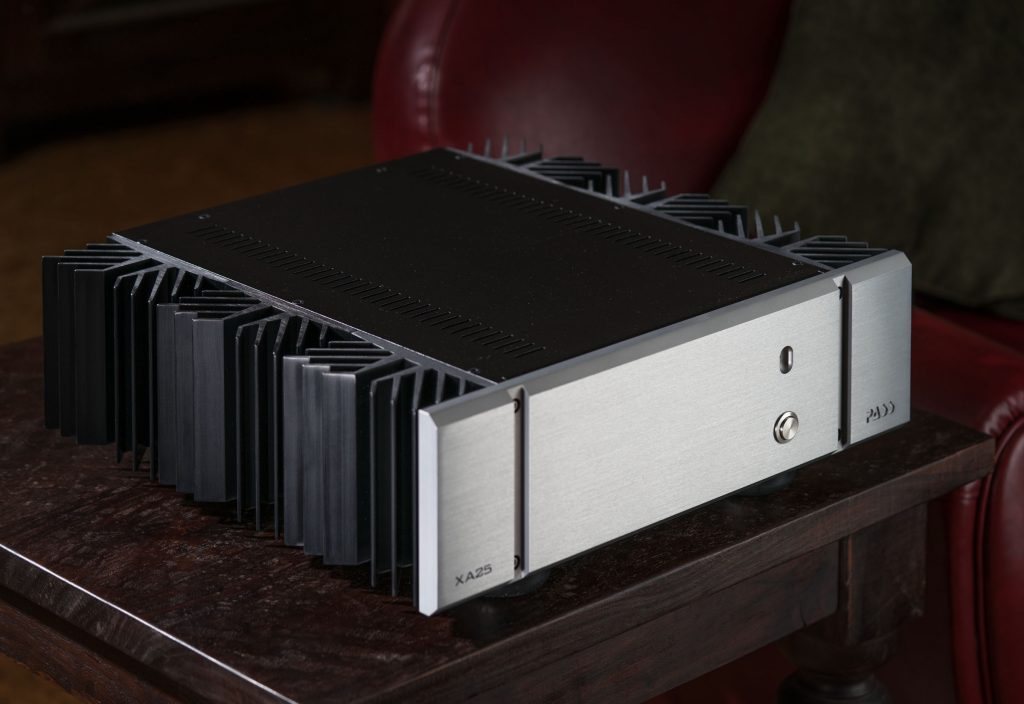
Pass Labs XA25 stereo power amplifier.
Next I wanted to hear the Pass Labs XP-12 line level preamplifier combined with the Pass Labs XA25 stereo amplifier (review HERE).
My intention was to repeat what I did with the XP-12 pre and SIT-3 amp combo, with the XA25 stereo amplifier inserted in place of the SIT-3 amp, while again utilizing the Audio Note (UK) CD 2.1x/II Level Two Red Book CD player and CTC Garrard 301 turntable as sources.
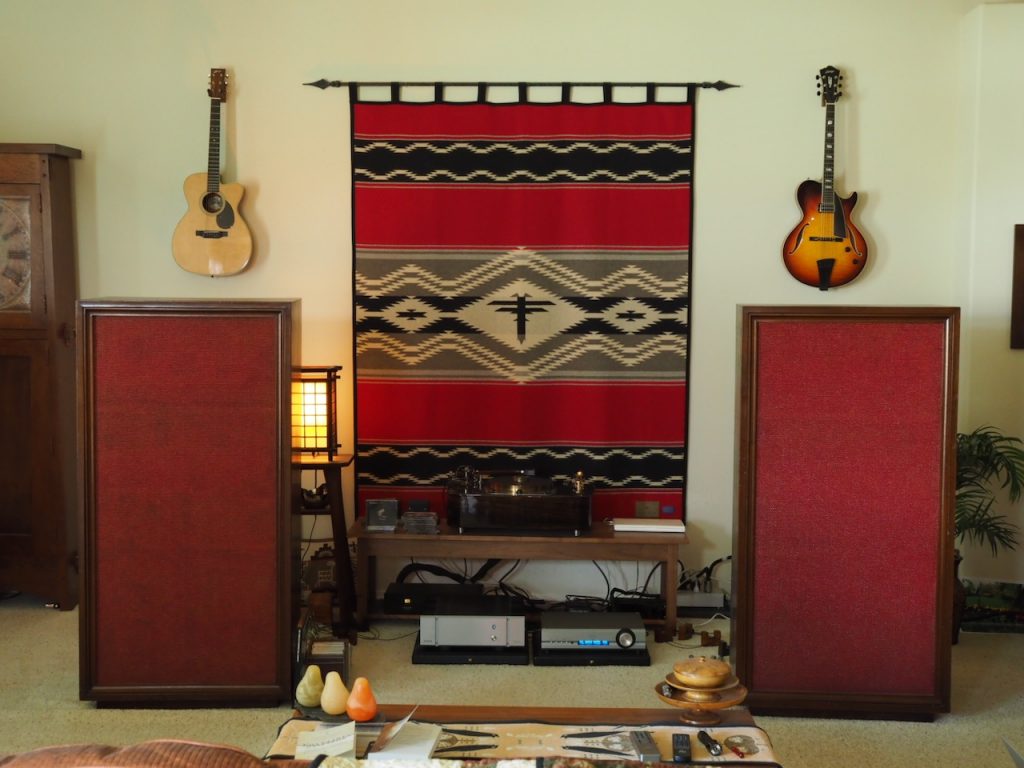
System photo with the Pass Labs XP-12 pre & XA25 power amp.
Switching to the Pass Labs XA25 stereo power amplifier, I realized what a clear window into amplifier performance the Pass Labs XP-12 line level preamplifier provides.
The Pass Labs XP-12 pre and XA25 amp combo provides a distinctly different overall presentation of music and visuospatial attributes as compared to First Watt SIT-3.
The Pass Labs XP-12 preamplifier is a bit of a chameleon in that it is hard to pin down its contributions to the overall sound, as it is very neutral, which allowed me to really hear the distinct contributions of the amplifiers it was paired with (as well as other changes to system components).
For example, one of the primary differences I heard between the XP-12 pre & SIT-3 amp combo and the XP-12 pre & XA25 amp combo, was the way they presented the overall performance to the listener in the listening room.
With the XP-12 pre & SIT-3 amp combo it gave a distinct "you are there at the recording venue with the musicians" style of presentation, while the XP-12 pre & XA25 amp combo gave a "the musicians are here in your listening room" style of presentation.
I think that difference in the "you are there" or the "they are here" style of presentations was due to the SIT-3 amp emphasizing the acoustic of the recording venue more strongly than does the XA25 amp.
With the SIT-3 amp the recorded acoustic dominated that of my listening room's sense of acoustic space, filling it up with a big billowing sense of acoustic space that transported me as a listener to the recording venue. In other words, it was obvious to me that the sense of acoustic space of the recording venue dominated the sense of the acoustic space of my own listening room, essentially replacing it with that of the recording venue.
With the XA25 amp, the recorded acoustic blends in more with my listening room's sense of acoustic space, which made it feel like the musicians were transported into my listening room.
Both approaches are valid, of course, and different listeners will probably prefer one or the other style of presentation in their listening room, although you might find it challenging choosing between these two similarly priced high-performance amplifiers! Hint: go with XA25 amp if you have speakers of average sensitivity, and with the SIT-3 amp is you have sensitive loudspeakers like my Altec loudspeakers.
The XP-12 preamp also revealed the Pass Labs XA25 amp to be a little drier sounding than the very liquid sounding First Watt SIT-3 amp. The XA25 is not a "dry" sounding amp in the pejorative sense, I'm just saying it is a bit drier in comparison to the very liquid SIT-3 amp. I have a hunch that replacing the Duelund DCA16GA speaker cables with the Duelund DCA12GA speaker cables will provide more liquidity from the XA25 amp, so I plan to check that out and report back at some point in the future.
Another aspect of the XA25 amp's performance that the XP-12 preamp made abundantly clear, was how incredibly powerful the XA25 amp was when driving my highly sensitive Altec loudspeakers.
I might add that the XA25 amp can be frighteningly powerful with such sensitive loudspeakers, and discretion is advised if there are large dynamic swings in the music, unless you want a heart-stopping surprise on dynamic peaks (and possibly damaged loudspeaker drivers).
Ok, let me shift gears now and give you some listening impressions with the Pass Labs XP-12 preamp and XA25 amp from a couple of CDs, and one CD box set, that I have been listening to a lot lately.
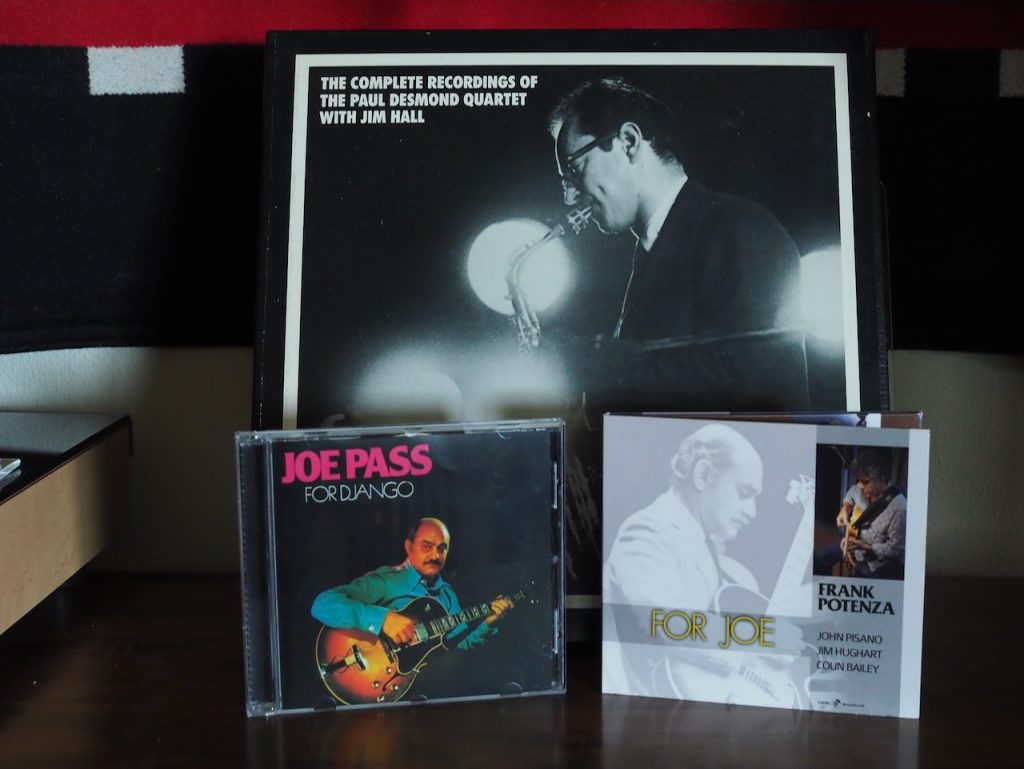
Joe Pass, Frank Potenza, and Jim Hall CDs!
The Complete Recordings Of The Paul Desmond Quartet With Jim Hall box set (Mosaic) was compiled from recordings that spanned from 1959 to 1965, with Paul Desmond on alto saxophone, Jim Hall on guitar, and Connie Kay on drums in all the sessions. A number of bass players contributed to the recordings, including George Duvivier, Gene Cherico, Gene Wright, and Percy Heath.
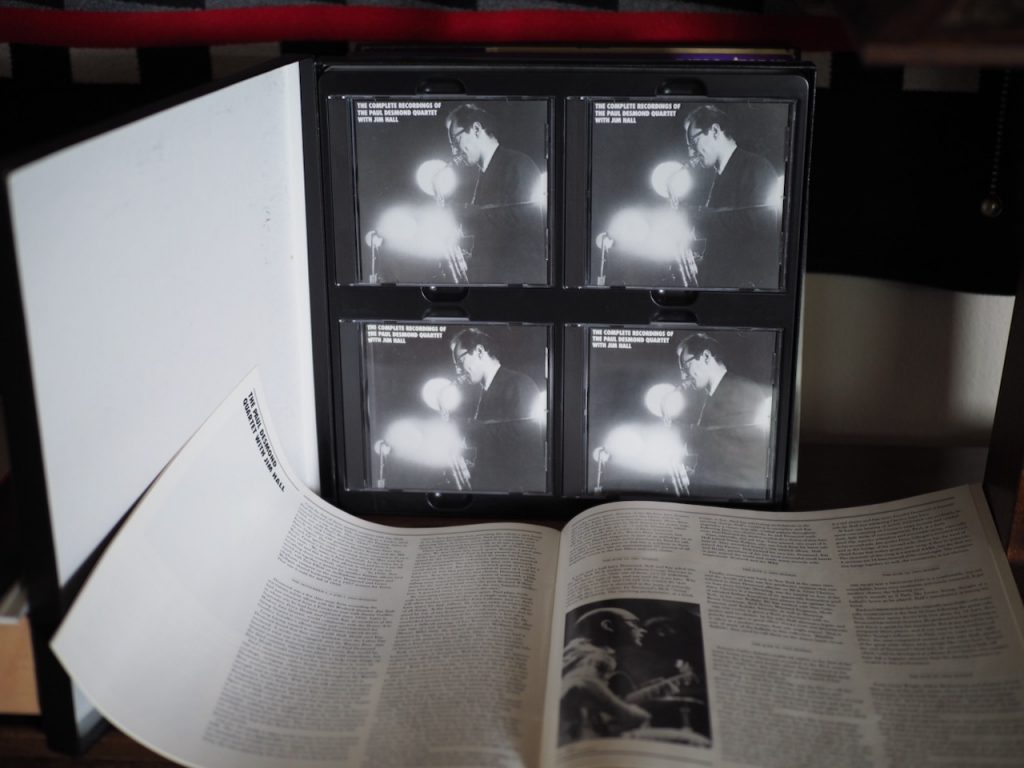
The Complete Recordings of The Paul Desmond Quartet With Jim Hall.
As I started listening to Disc II from the box set, I was immediately impressed with how natural and timbrally correct Paul Desmond's alto sax, Gene Wright's bass, Connie Kay's drums, and Jim Hall's guitar sounded through the Pass Labs XP-12 preamp and XA25 amp combo.
The presentation of the soundstage was wide, with multiple layers of instrumental images back into the soundstage, and the images were of realistic size (a benefit courtesy of the huge "Stokowski" Altec loudspeakers).
The images were vivid, with a lot of presence, lending a live-like excitement to the music. The sense of recorded acoustic varied a little bit depending on the recording venue, with RCA Studio A and Webster Hall having their own ambient signature.
While I tried to focus on various elements of musicality like timbre, tempo, harmony, melody, etc., or visuospatial elements like soundstage, imaging, etc., I soon gave up on analytical listening as I was swept away by the musical experience that the Pass Labs XP-12 preamp and XA25 amplifier so easily provided.
Being swept away by the music during my listening sessions with the Pass Labs and First Watt components was a common occurrence. I took notes for as long as I could, then I just sat back and soaked in the musical experience these components provided, which I suppose is the most meaningful praise I can bestow upon them.
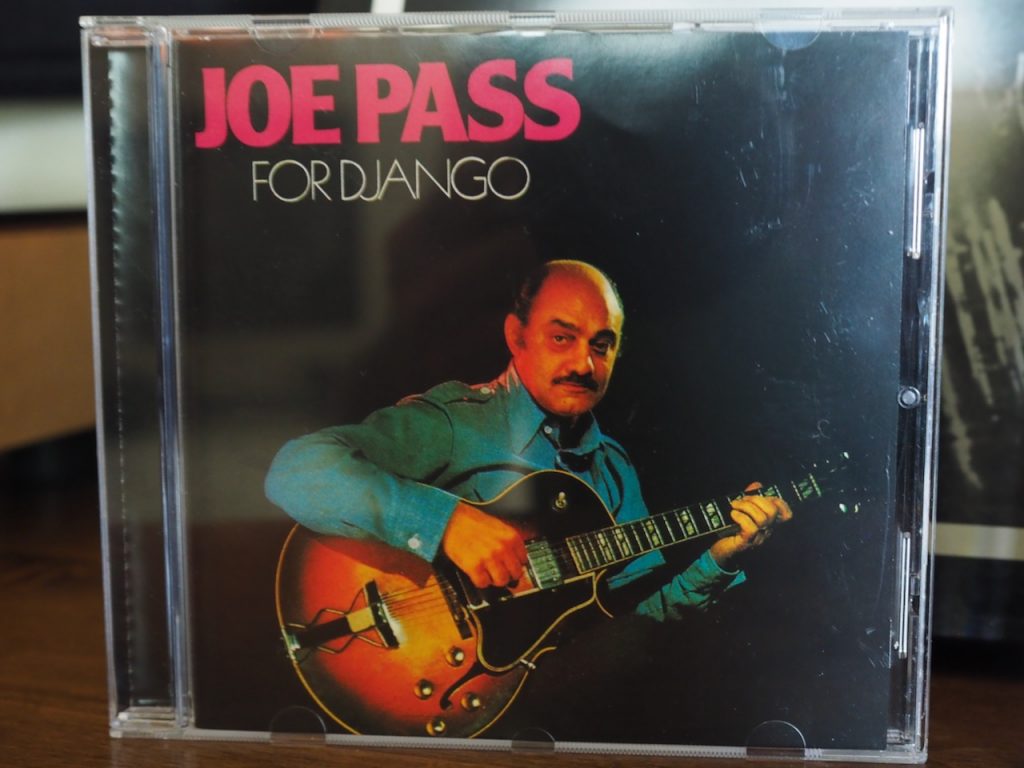
Joe Pass - For Django
Joe Pass' For Django is probably the Joe Pass album for many jazz guitarists. For Django was Joe Pass' tribute album to the incredible gypsy jazz guitarist, Django Reinhardt. For Django was recorded at Pacific Jazz Studios in Hollywood in October of 1964. For Django features Joe Pass on guitar, John Pisano on guitar, Jim Hughart on bass, and Colin Bailey on drums.
The XP-12 preamp and XA25 amp sounded really, really, good on For Django. The tempo, and changes in tempo, were very evident, and the dynamic shadings from soft to loud were impressive, which really made Joe's soloing come alive in an impressive fashion.
Imaging was very vivid, with a lot of "I'm in the room with you" presence, which really gave the music a live-like feel.
The layering into the soundstage was distinct, with Joe Pass on guitar at center stage, albeit situated further back on the stage, but with volume boosted on his guitar compared to the volume of John Pisano, Jim Hughart, and Colin Bailey (except when they are soloing), so you know that Joe is the featured performer on the album.
John Pisano on guitar was on the right of the soundstage, and further forward, with Jim Hughart on bass being on the right of soundstage, situated between Joe and John. Colin Bailey on drums was on the left and forward about the same amount as John.
Overall tonality of the instruments was truly superb, and timbral textures were believably real sounding.
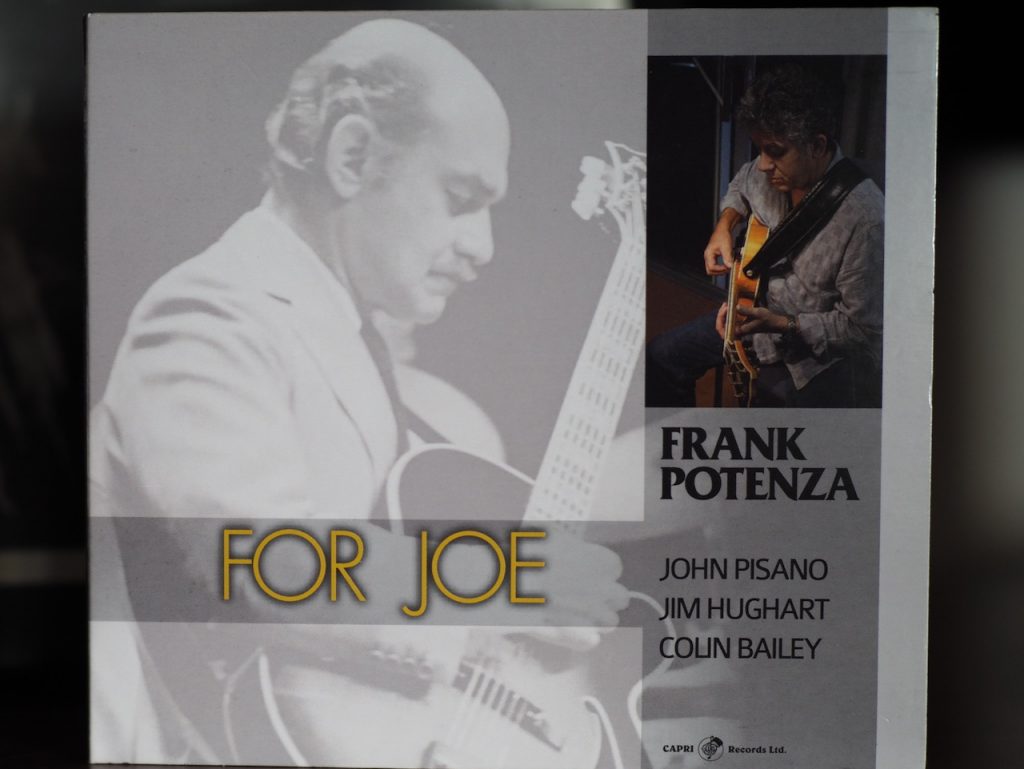
Frank Potenza's "For Joe"
I love Frank Potenza's For Joe tribute album to Joe Pass, and I've lost track of how many times I've listened to it. The concept of the album is brilliant. Joe Pass has left Planet Earth, but John Pisano, Jim Hughart, and Colin Bailey who played on Joe Pass' For Django are still with us. Frank Potenza - a protégé of Joe Pass - gathered them together to recreate the feel of Joe's For Django, with Frank taking Joe's place in the album.
Frank covers some of the songs on For Django, as well as some beautiful numbers that weren't on For Django, for a creative and reverential tribute album to Joe. Seriously, if you don't have a copy of For Django and For Joe, you need to get both and join in on the fun, you won't be sorry!
By the way, you should "friend" Frank Potenza on Facebook ASAP so you can listen to the Sunday afternoon free concerts Frank has been streaming over Facebook during the Covid-19 pandemic, which are a truly wonderful way to get more familiar with his talent as a jazz guitarist.
For Joe is a wonderful album musically speaking, and the tone is just out of this world. From an audiophile-geek standpoint you'll notice that the soundstage isn't as wide and layered in depth as For Django, but you won't care because the music is so inspired and beautiful.
I've timed out on being analytical for now, and am just sitting her enjoying listening to For Joe for its incredible musicianship and tasteful selections as I finish up this post.
These kind of inspired albums is what makes our audio hobby so much fun for me, and when I get hear them through high-performance components like the Pass Labs XP-12 preamp and XA25 power amplifier ... well it just doesn't get better than that!
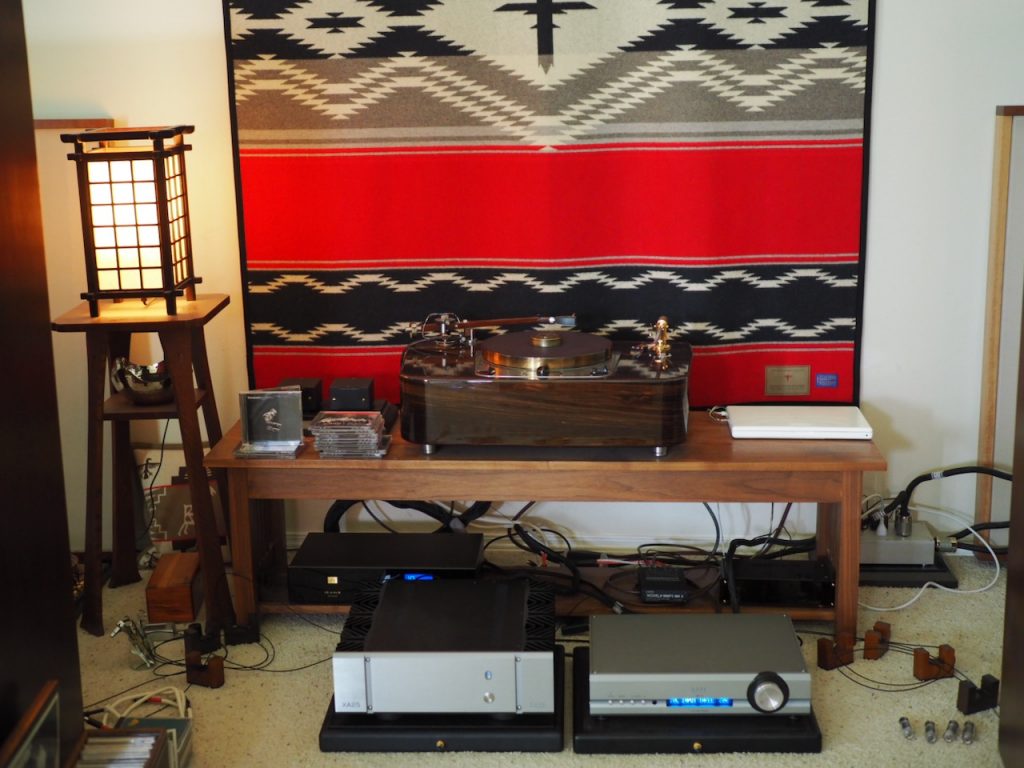
Pass Labs XP-12 preamp and XA25 power amplifier.
So what do all my listening sessions with the Pass Labs XP-12 line-level preamplifier tell me about it so far?
Well first off, from a listening standpoint, I found the chameleon-like Pass Labs XP-12 line-level preamplifier to be very transparent, resolving, and smooth, while still being musically natural sounding.
That's a bit of a magic trick as far as the XP-12 is concerned, because transparent and resolving rarely translates into an audio component that is smooth, natural sounding, and very musical, which the XP-12 pre is.
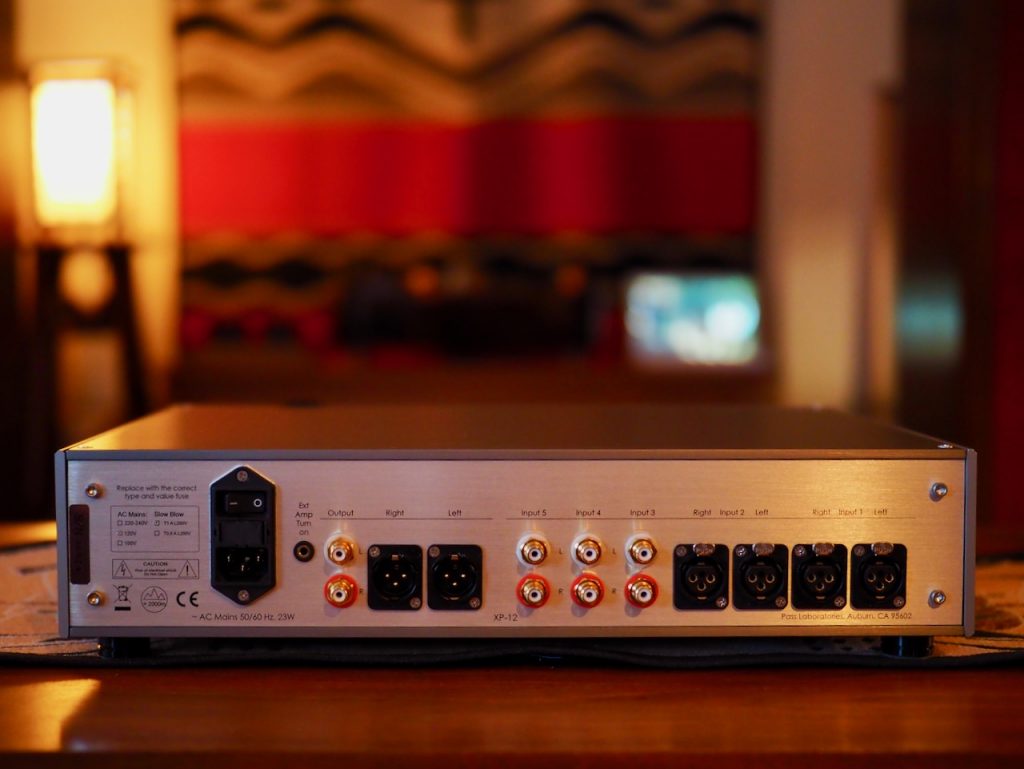
Pass Labs XP-12 preamplifier.
The XP-12 also is very versatile in the way it accommodates a range of very different sounding amplifiers like the Pass Labs XA25, the First Watt SIT-3, or even my Leben CS-600 vacuum tube amplifier, and gets the best out of each of them.
That bodes well for those who have a number of different amplifiers in their amplifier stable that they enjoy swapping in and out as the mood strikes, as you can count on getting the best out of each of them with the XP-12 preamp.

Pass Labs XP-12 preamplifier and remote control.
From a use perspective, I found the XP-12 preamp to be a joy to use during listening sessions. I love that the volume can be controlled in 1dB steps from the remote, and that you can dim the display during those late night sessions.
Ok, that's it for now. Next time I'll tell you about listening to some vinyl with the XP-12 and XA25 combination!
As always, thanks for stopping by, and may the tone be with you!



























